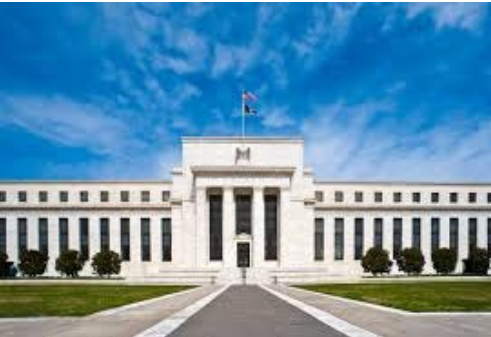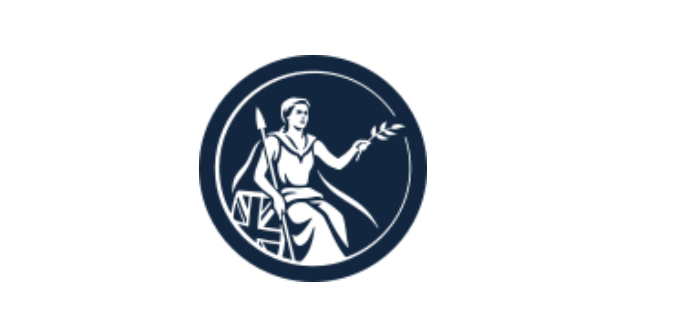Tierney’s Real News | Sept 2, 2024

This is Part 3 of my series on “What’s the Plan to Save America?” You can find Part 1 here and Part 2 here. I suggest reading them in order as they build on each other.
As I said earlier, I believe that President Trump’s Plan to Save America involves ENDING THE FEDERAL RESERVE and GIVING BACK control of America’s money to the people
There have been various criticisms of central banks, including the Federal Reserve, since their establishment. However, most people don’t really understand how they work or why they are bad. Let’s review how they started in America, why so many people wanted to abolish them – and how it can be done!
The Revolutionary War win of America over Great Britain resulted in a struggling economy and a large debt. Alexander Hamilton, the first secretary of the Treasury under the new Constitution — had ambitious ideas about how to solve some of these problems. One of those was creating a central national bank. Hamilton used the charter of the Bank of England as the basis for his plan.

The Bank of England is the central bank of the United Kingdom and the model on which most modern central banks have been based. Established in 1694 to act as the English Government‘s banker and debt manager, and still one of the bankers for the Government of the United Kingdom, it is the world’s eighth-oldest bank.
Not everyone agreed with Hamilton’s plan. Thomas Jefferson and James Madison led a team who opposed the Bank of the United States. They believed that a central Bank was unconstitutional, would infringe on states’ rights, and would benefit a small group at the expense of the many.
Thomas Jefferson was afraid that a central national bank would create a financial monopoly that might undermine state banks and adopt policies that favored financiers and merchants instead of home owners, workers and family farmers. Jefferson also argued that the Constitution did not grant the government the authority to establish corporations, including a national bank. Hamilton’s bill cleared both the House and the Senate after much debate. President Washington signed the bill into law in February 1791.
America’s new government created the First Bank of the United States for 20 years to address these issues from the federal level – America’s FIRST central bank – the precursor to today’s Federal Reserve.
The Bank of the United States started with capitalization of $10 million, $2 million of which was owned by the government and the remaining $8 million by private investors. Many of the initial investors were foreign, a fact that did not sit well with many Americans, even though the foreign shareholders could not vote.
The Bank acted as the federal government’s fiscal agent, collecting tax revenues, securing the government’s funds, making loans to the government, transferring government deposits through the bank’s branch network, and paying the government’s bills. The bank also managed the U.S. Treasury’s interest payments to European investors in U.S. government securities.
Unlike modern central banks, the first Bank of the United States did not set monetary policy as we know it today. It did not regulate or act as a lender of last resort for other financial institutions, and it did not hold their reserves.
The Bank of the United States would accumulate the notes of the state banks and hold them in its vault. When it wanted to slow the growth of money and credit, it would present the notes to banks for collection in gold or silver, thereby reducing state banks’ reserves and putting the brakes on their ability to circulate new banknotes. To speed up the growth of money and credit, the Bank would hold on to the state banks’ notes, thereby increasing state banks’ reserves and allowing those banks to issue more banknotes by making loans.
The first Bank’s charter expired in 1811 and the House voted against renewal by just one vote. By 1811, many of those who had opposed the bank in 1790 still opposed it for the same reasons and said the charter should be allowed to expire. By this point, Alexander Hamilton was dead — killed in a duel with Aaron Burr — and Hamilton’s pro-Bank Federalist Party was out of power, while the Jeffersonian Republican Party (later renamed the Democratic-Republican Party) was in control. Also, by 1811, the number of state banks had increased greatly, and those financial institutions feared both competition from a national bank and its power.
The following year, General Andrew Jackson led the U.S. to victory at the Battle of New Orleans, ending the War of 1812 with Great Britain – which many called the “second war of Independence” to stop Britain from RETAKING control of America after the Revolutionary War.
Now that America had defended its existence with military force, it had to develop stronger financial systems to ensure the nation’s long-term success.
The United States Congress authorized a Second Bank of the United States as a public-private enterprise in 1816 for a period of 20 years. The Second Bank of the United States was the second federally authorized Hamiltonian national bank in the United States and was located in Philadelphia, Pennsylvania. The institution’s capital, reach and responsibilities were more expansive than those of the First Bank. Key duties were to hold the country’s money, generate revenue through loans and pay off the national debt. The Bank profits benefited private stockholders as well as the U.S. government.
The Second Bank held large amounts of other banks’ notes in reserve. The bank could discipline banks that it believed were over-issuing notes by threatening to redeem those notes. The Second Bank was larger than the First Bank of the United States and became one of the world’s largest corporations. Federalists argued for it, and Anti-Federalists argued against it. President James Madison reluctantly signed the Second Bank bill into law in 1816 after previously opposing the creation of the First Bank of the United States.
President Andrew Jackson, who was elected in 1828, was a central bank foe and vowed to destroy it. Andrew Jackson promised to reform government and high on his list was the “corrupt” and “monstrous” Second Bank of the United States. His position was that Congress did not have the Constitutional authority to create it. Jackson realized that banks held an important role in the U.S. economy but he believed that the Second Bank of the United States held too much power and could wield it at any moment to ruin the U.S. economy. Andrew Jackson is Trump’s hero.



….Which is a good reason to NOT vote Trump.
The US could do well in the 19th century despite not having a central bank because most of its development was internal. When the US entered international trade and lending – definitely in WW I it had already become embarrassing before WW I for Americans going abroad to have to buy sterling, francs or marks before leaving New York. NB Woodrow Wilson established the Fed before the war.
To demolish the Federal Reserve would also demolish the underpinnings – guaranteed nation wide value of the dollar and guaranteed banks even if one occasionally bankrupts it is insured – of the single trading area that is the USA. No Fed would probably stop the dollar being the World reserve currency – which is a major advantage to the US economy which has the use of World wealth banked and traded in dollars even when not in US banks in the US.
NB The Bank of England was modelled on the Bank of Amsterdam. Central banking (a bankers’ bank) with sound tax – all British landowners paid land tax on their rent rolls and budgeting is what enabled the British to win the maritime wars of the 1700’s from half the population base than France the paramount power of that time. The Younger Pitt also consolidated all debts into a single fund management – which enabled Britain to survive the Napoleonic Wars even though it emerged in 1815 with a debt 250% of GDP at the time.
The French Monarchy went bankrupt into the 1789 Revolution because it did not have consistent unified tax, debt and spend means and policies across its domain and its landowners ie aristocracy did not pay direct taxes and resisted any reforms in the 1780’s. If Trump does break the Fed Reserve the banks themselves will create a bankers’ bank fulfilling central banking requirements and will be entirely unaccountable politcally but every bit as powerful as the Fed – qv the Bank of International Settlements in Switzerland which was so created by the existing banks of Europe.